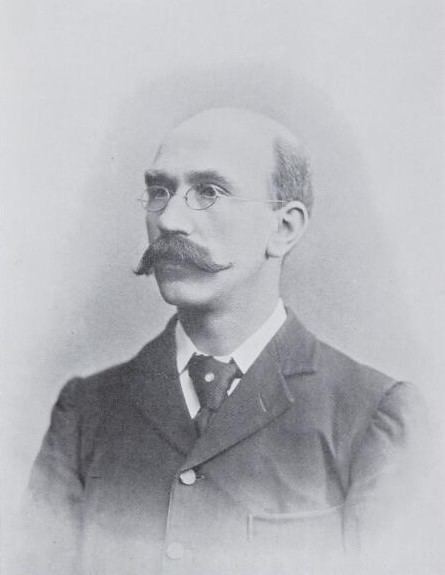Name William Smith | ||
 | ||
Books Myths and Legends of the Australian Aboriginals, Aborigine: Myths and Legends | ||
Education University of Edinburgh | ||
William Ramsay Smith (27 November 1859 – 28 September 1937) was a Scottish physician, naturalist, anthropologist and civil servant, active in Australia later in his career.
Contents
Early life
Smith was born in King Edward, Aberdeenshire, Scotland, the son of William Smith (a farm servant, and later stationmaster) and his wife Mary née MacDonald (domestic servant). He attended the nearby Cairnbanno Madras Public School, becoming a pupil-teacher. Winning a Free Church scholarship, from 1877 he studied arts at Edinburgh University and attended the Moray House Training College for two years.
Career
At 20 years of age Smith was appointed headmaster of Invergordon Public School, in Easter Ross, but, interested in psychology, he again attended Edinburgh University, studying arts and science subjects, and won an entrance scholarship for medicine of £100 a year for three years. On completing his medical course in 1885 Smith was appointed assistant-professor of natural history, senior demonstrator of zoology at Edinburgh University. He graduated BSc (natural sciences) in 1888.
In 1889 'Illustrations of Zoology' was published which he had prepared in collaboration with J. S. Norwell. He graduated MB ChM in 1892. For two years Smith was demonstrator of anatomy at Edinburgh, and served as examiner at the Royal College of Physicians of Edinburgh.
Australia
In 1896 was brought to Australia by the Government of South Australia to fill a pathology position at the Royal Adelaide Hospital. Smith was expelled from the British Medical Association and banned from the association for life in 1897 after internal conflict with Hospital staff, but having been exonerated by a Tribunal, in 1899 he was appointed city Coroner and permanent head of the department of health at Adelaide.
In 1901 during the South African War Smith was surgeon captain, Imperial Bushmen's Corps and officer in charge of plague administration at Cape Town.
Smith was suspended from coronial duties in 1903 after 18 charges were laid against him of the misuse of human remains, specifically the removal of heads and the collection of skeletons for medical research. A board of inquiry headed by James George Russell found that Smith's actions had been "indiscreet" and he was dismissed from his position as coroner. However, he was later reinstated and continued his practice of illicitly collecting human remains.
In 1904 Smith graduated DSc from the University of Adelaide, and published A Manual for Coroners. In his spare time made a special study of the Australian aborigines. Smith was the author of The Aborigines of Australia, which was printed in volume three of the Official 'Year Book of the Commonwealth of Australia' (1910).
In 1913 he published 'Medical Jurisprudence from the Judicial Standpoint', for which he received the degree of MD from Edinburgh University.
In 1915 was in charge of the Australian General Hospital, Australian Imperial Force, Heliopolis, Egypt. There, he clashed with principal matron Bell over which of them should manage the nursing staff. An Inquiry resulted in both being recalled to Australia.
On his return to Adelaide, Smith resumed his duties at the board of health and contributed to the 'Australian Encyclopaedia', including a large part of the article on Aborigines. Following a trip to the South Seas Smith published In Southern Seas (1924); the second half of this book mostly relates to the Australian aborigines.
Smith retired in 1929 and published a book Myths of the Australian Aboriginals (1930), a collection of narratives as told by aboriginal people. It has subsequently emerged that the volume was plagiarised, and was almost entirely written by the Aboriginal polymath and scientist David Unaipon, who had sold the text to finance his own work. Authorship of the book has now been restored to Uniapon and it has been republished under his name. Smith has also been accused of sales of Aboriginal artefacts for profit.
Anthropological collection
Ramsay Smith was responsible for the bulk of Edinburgh University's physical anthropology collection, some 500 to 600 individuals.
From Ramsay Smith's writings, it is clear that he was aware of indigenous funerary customs.
"After death no reference is made to the deceased, nor is his name mentioned. Relations by the same name find a substitute. A mother would not give [me] a lock of her child’s hair because she has been taught that if the child dies, its spirit will find no rest if that lock of hair survives."
As desecration of human remains was illegal, he used his position as Adelaide’s coroner to illicitly dissect and collect human remains, many being individuals of unusual pathologies or disease, most of which he presented to Edinburgh University. His writings indicate that he also robbed graves and it is believed he had once destroyed five graves to obtain one good specimen. Witnesses also record that he practiced his marksmanship with a .303 rifle on corpses at the mortuary of Adelaide hospital. While he did not receive payment for the remains, he was rewarded for his "donations" with Fellowship of the Royal Society of Edinburgh (upon the proposal of Sir William Turner, Daniel John Cunningham, Alexander Crum Brown and Cargill Gilston Knott) and an Honorary Fellowship of the Royal Anthropological Institute. He was an honorary member of the Association of Military Surgeons of the United States.
At his death in 1937, 182 skulls were found in his Adelaide home.
In addition to numerous books, Ramsay Smith also published pamphlets and contributed largely to scientific journals and Chambers Encyclopaedia. He was interested in literature, philosophy and music, was an excellent public servant, and earned a reputation as an authority on the Australian aborigine.
Death
Smith spent his final years quietly among his books at Belair, South Australia, where he died on 28 September 1937. Smith had married Margaret, daughter of James Mackenzie, on 1 June 1889, who predeceased him. Four daughters and a son survived him.
